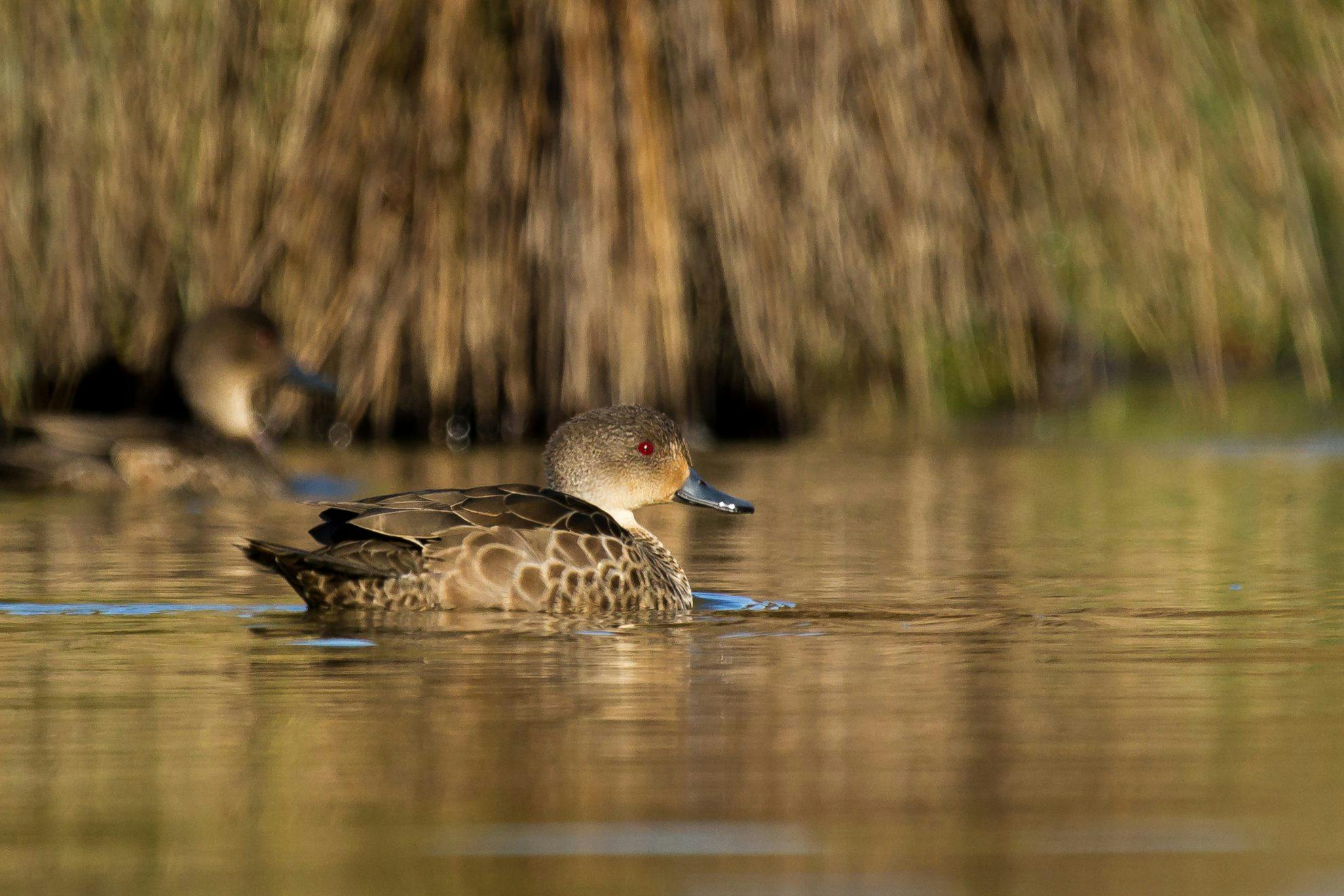While similar to a mallard, the grey teal can be distinguished by the striking crimson iris of its eyes.
The grey teal (têtê) is a native (self-introduced) dabbling species of duck. It is a nomadic bird and highly mobile, able to take advantage of changing seasons and conditions to find optimal habitats.
Conservation status: Native species classified as ‘not threatened’.
Features: The têtê is considerably smaller than a grey or mallard duck but at a distance may be confused for the latter. It is a mostly grey-brown colour with a distinct ‘mottled’ appearance. This is due to each feather on its body having a buff, beige edge. The only other colour the grey teal possesses is a pale cream on the throat, cheeks and chin. Its most outstanding feature is the bright crimson iris. Male and females look alike while immature birds have a duller eye.
Call: Its most common call is a very fast ‘cuck-cuck-cuck’ and is most often heard in the late evening or at night.
Nesting: The têtê breeding season is relatively long, running from July to January. Nests can be sited off the ground in the hollows of trees as well as on the ground under tall grasses and reeds. Pairs are believed to stick together and breed together each year. A typical clutch size numbers around seven and like all duck species, the hatching of eggs is synchronised.
Diet: Mostly small aquatic insects and molluscs which are filtered at the water’s surface or from mud on the bottom. Seeds from swamp plants are also eaten and obtained by ‘stripping’. Most foraging is done at night, very early morning or late evening.
Bird spotting tip: Têtê ‘hang out’ with other duck species so if you’re in an area with a lot of ducks, take a close look at their size – the teal will be noticeably smaller. Late evening or dusk is a good time to spot these birds as usually they are flying to feed areas and are very vocal during their flights.
Feathery fact: In New Zealand, the grey teal is a fully protected species but every year, during the duck hunting season, many are misidentified as grey or mallard ducks and killed. In Australia, the grey teal is one of the most common sought-after game bird species. Grey teal number about 120,000 here.








